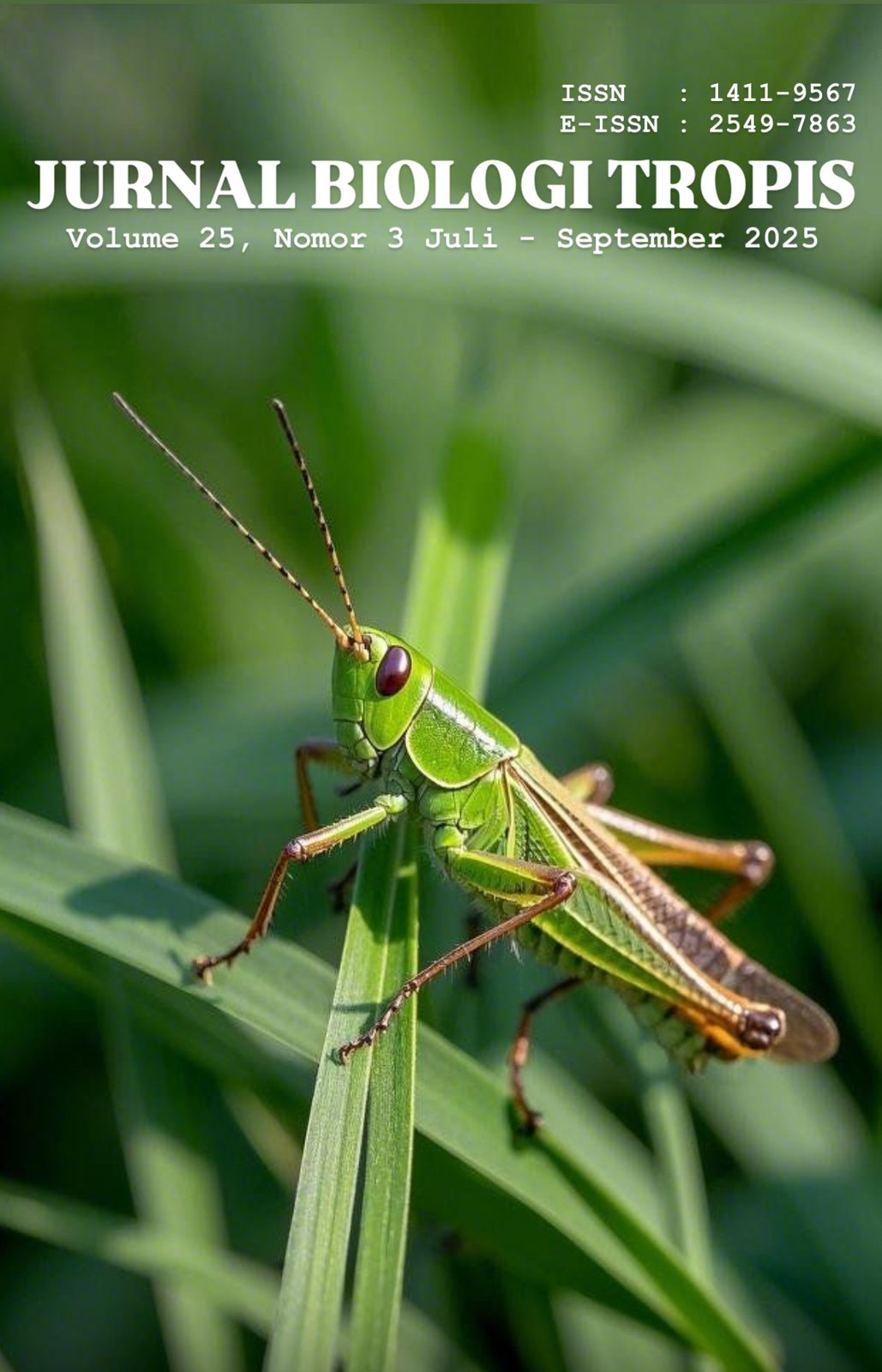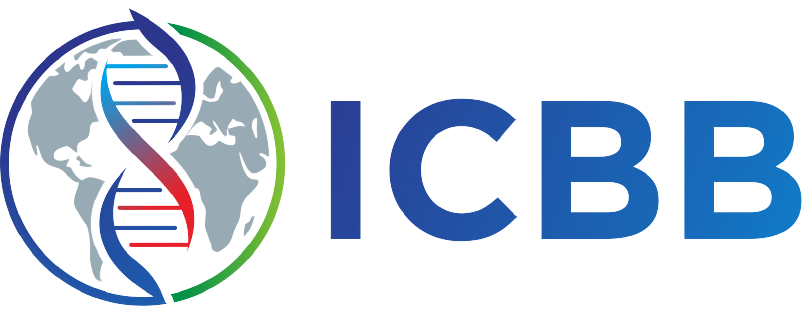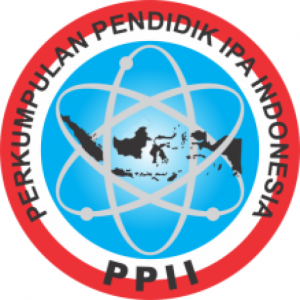Content of Dry Matter, Organic Matter, and Ash Wheat forage (Triticum Spp.) Fodder of Hydroponic at age different Defoliation Times
Authors
Arya Eka Putra , Sri SukaryaniDOI:
10.29303/jbt.v25i3.9512Published:
2025-07-10Issue:
Vol. 25 No. 3 (2025): Juli-SeptemberKeywords:
Defoliation, fodder, hydroponic, wheat.Articles
Downloads
How to Cite
Downloads
Metrics
Abstract
The increasing need for green fodder as animal feed continues to increase, especially in the face of limited land and weather changes, this encourages farmers to continue to innovate in an effort to meet the need for green fodder for livestock. Wheat (Triticum spp.) is a potential plant for green fodder because it grows quickly and has high nutritional content. The hydroponic fodder system is one method of plant cultivation that uses water rich in nutrients as a substitute for soil. The purpose of this study was to determine the effect of different defoliation ages on hydroponic wheat fodder green fodder production and nutrient content (dry matter, organic matter, and ash). The design used in the study was a Completely Randomized Design with 3 treatments, each treatment repeated 4 times. The treatments were P1: defoliation at 6 days; P2: defoliation at 8 days and P3: defoliation at 10 days. The variables observed included fresh weight, dry matter content, organic matter, and ash content of hydroponic wheat fodder green fodder. The results of the study showed that the highest fresh weight was achieved in P3 (118.75 ± 3.8 grams), then P2 (104.50 ± 6.1 grams) and P1 (77.50 ± 5 grams). The highest dry matter content was achieved in treatment P1 (33.84 ± 4.99 grams), followed by P2 (27.16 ± 2.9 grams) and the lowest in treatment P3 (23.33 ± 0.7 grams). The lowest ash content was in P1 (1.76 ± 0.39 grams) while the highest organic matter content was in treatment P1 (98.24 ± 0.39 grams). This research can be concluded that the difference in defoliation age between 6 - 10 days has a significant effect on the production and content of dry matter, organic matter and ash of hydroponic fodder.
References
Azzamuddin, M. W., & Wiraguna, E. (2025). Optimasi Konsentrasi Pupuk Daun Untuk Pertumbuhan dan Pengendalian Penyakit Curvularia Pada Bibit Kelapa Sawit. Botani : Publikasi Ilmu Tanaman Dan Agribisnis, 2(2), 24–32. https://doi.org/10.62951/botani.v2i2.304
Bouadila, S., Baddadi, S., Skouri, S., & Ayed, R. (2022). Assessing heating and cooling needs of hydroponic sheltered system in mediterranean climate: A case study sustainable fodder production. Energy, 261, 125274. https://doi.org/10.1016/j.energy.2022.125274
Brousseau, V. D., Goldstein, B. P., Leroux, D., Giguère, T., MacPherson, S., & Lefsrud, M. (2024). Estimating the global warming potential of animal waste-based organic liquid fertilizer for urban hydroponic farms. Journal of Cleaner Production, 472, 143434. https://doi.org/10.1016/j.jclepro.2024.143434
Chand, S., Indu, Singhal, R. K., & Govindasamy, P. (2022). Agronomical and breeding approaches to improve the nutritional status of forage crops for better livestock productivity. Grass and Forage Science, 77(1), 11–32. https://doi.org/10.1111/gfs.12557
Elmulthum, N. A., Zeineldin, F. I., Al-Khateeb, S. A., Al-Barrak, K. M., Mohammed, T. A., Sattar, M. N., & Mohmand, A. S. (2023). Water Use Efficiency and Economic Evaluation of the Hydroponic versus Conventional Cultivation Systems for Green Fodder Production in Saudi Arabia. Sustainability, 15(1), 822. https://doi.org/10.3390/su15010822
Gumus, H., & Edyta, K.-V. (2025). Effect of different seed density planting on biomass production and barley fodder quality grown in hydroponic systems. Agronomy Science, 79(3), 65–72. https://doi.org/10.24326/as.2024.5400
Hassen, A., & Abdula, A. H. (2022). Contribution of Hydroponic Feed for Livestock Production and Productivity. Science Frontiers, 3(1), 1–7. https://doi.org/10.11648/j.sf.20220301.11
Heraini, D., Rohayeti, Y., Setiawan, D., & Patmawati, S. (2022). Pertumbuhan Dan Produktivitas Rumput Gajah Odot (Pennisetum Purpureum Cv. Mott) Yang Diberi Pupuk Kotoran Puyuh. Agrinimal Jurnal Ilmu Ternak Dan Tanaman, 10(2), 59–64. https://doi.org/10.30598/ajitt.2022.10.2.59-64
Iqbal, M. J., Shams, N., & Fatima, K. (2022). Nutritional Quality of Wheat. In Wheat. IntechOpen. https://doi.org/10.5772/intechopen.104659
Khalid, A., Hameed, A., & Tahir, M. F. (2023). Wheat quality: A review on chemical composition, nutritional attributes, grain anatomy, types, classification, and function of seed storage proteins in bread making quality. Frontiers in Nutrition, 10. https://doi.org/10.3389/fnut.2023.1053196
Khalil, M. M., Abdollahi, M. R., Zaefarian, F., Chrystal, P. V., & Ravindran, V. (2021). Apparent metabolizable energy of cereal grains for broiler chickens is influenced by age. Poultry Science, 100(9), 101288. https://doi.org/10.1016/j.psj.2021.101288
Khan, M. Z., Huang, B., Kou, X., Chen, Y., Liang, H., Ullah, Q., Khan, I. M., Khan, A., Chai, W., & Wang, C. (2024). Enhancing bovine immune, antioxidant and anti-inflammatory responses with vitamins, rumen-protected amino acids, and trace minerals to prevent periparturient mastitis. Frontiers in Immunology, 14. https://doi.org/10.3389/fimmu.2023.1290044
Kurniawan, W., Napirah, A., Isnaeni, P. D., & Bain, A. (2024). Nutrient qualities hydroponic corn green fodder (HCGF) of yellow-maize on different harvest time. IOP Conference Series: Earth and Environmental Science, 1341(1), 012062. https://doi.org/10.1088/1755-1315/1341/1/012062
Li, Y., Peng, R., Kunz, C., Wang, K., Terranova, M., Zhang, Y., Macsai, M., Frossard, E., & Niu, M. (2024). Hydroponic fodders as alternative feeds for ruminants to reduce ruminal methane emissions: An in vitro study. Journal of Dairy Science, 107(12), 10932–10944. https://doi.org/10.3168/jds.2024-25274
Luminata, F., Hilakore, M. A., Lazarus, E. J. L., & Lawa, E. D. W. (2024). Efek penggunaan mikroorganisme lokal dalam amofer rumput kume terhadap kandungan bahan kering, bahan organik dan kecernaanya secara in vitro. Animal Agricultura, 2(2), 565–574. https://doi.org/10.59891/animacultura.v2i2.48
Moore, K. J., Lenssen, A. W., & Fales, S. L. (2020). Factors Affecting Forage Quality. In Forages (pp. 701–717). Wiley. https://doi.org/10.1002/9781119436669.ch39
Ouyang, X., Ma, J., Liu, Y., Li, P., Wei, R., Chen, Q., Weng, L., Chen, Y., & Li, Y. (2023). Foliar cadmium uptake, transfer, and redistribution in Chili: A comparison of foliar and root uptake, metabolomic, and contribution. Journal of Hazardous Materials, 453, 131421. https://doi.org/10.1016/j.jhazmat.2023.131421
Palomares, R. A. (2022). Trace Minerals Supplementation with Great Impact on Beef Cattle Immunity and Health. Animals, 12(20), 2839. https://doi.org/10.3390/ani12202839
Pomoni, D. I., Koukou, M. K., Vrachopoulos, M. G., & Vasiliadis, L. (2023). A Review of Hydroponics and Conventional Agriculture Based on Energy and Water Consumption, Environmental Impact, and Land Use. Energies, 16(4), 1690. https://doi.org/10.3390/en16041690
Rapisarda, R., Nocera, F., Costanzo, V., Sciuto, G., & Caponetto, R. (2022). Hydroponic Green Roof Systems as an Alternative to Traditional Pond and Green Roofs: A Literature Review. Energies, 15(6), 2190. https://doi.org/10.3390/en15062190
Son, J. E., Kim, H. J., & Ahn, T. I. (2020). Hydroponic systems. In Plant Factory (pp. 273–283). Elsevier. https://doi.org/10.1016/B978-0-12-816691-8.00020-0
Sousa, R. de, Bragança, L., da Silva, M. V., & Oliveira, R. S. (2024). Challenges and Solutions for Sustainable Food Systems: The Potential of Home Hydroponics. Sustainability, 16(2), 817. https://doi.org/10.3390/su16020817
Sriagtula, R., Martaguri, I., Sowmen, S., & Zurmiati. (2021). Evaluation of nutrient solution dose and harvest time on forage sorghum (Sorghum bicolor L. Moench) in hydroponic fodder system. IOP Conference Series: Earth and Environmental Science, 888(1), 012068. https://doi.org/10.1088/1755-1315/888/1/012068
License
Copyright (c) 2025 Arya Eka Putra, Sri Sukaryani

This work is licensed under a Creative Commons Attribution 4.0 International License.

Jurnal Biologi Tropis is licensed under a Creative Commons Attribution 4.0 International License.
The copyright of the received article shall be assigned to the author as the owner of the paper. The intended copyright includes the right to publish the article in various forms (including reprints). The journal maintains the publishing rights to the published articles.
Authors are permitted to disseminate published articles by sharing the link/DOI of the article at the journal. Authors are allowed to use their articles for any legal purposes deemed necessary without written permission from the journal with an acknowledgment of initial publication to this journal.


























